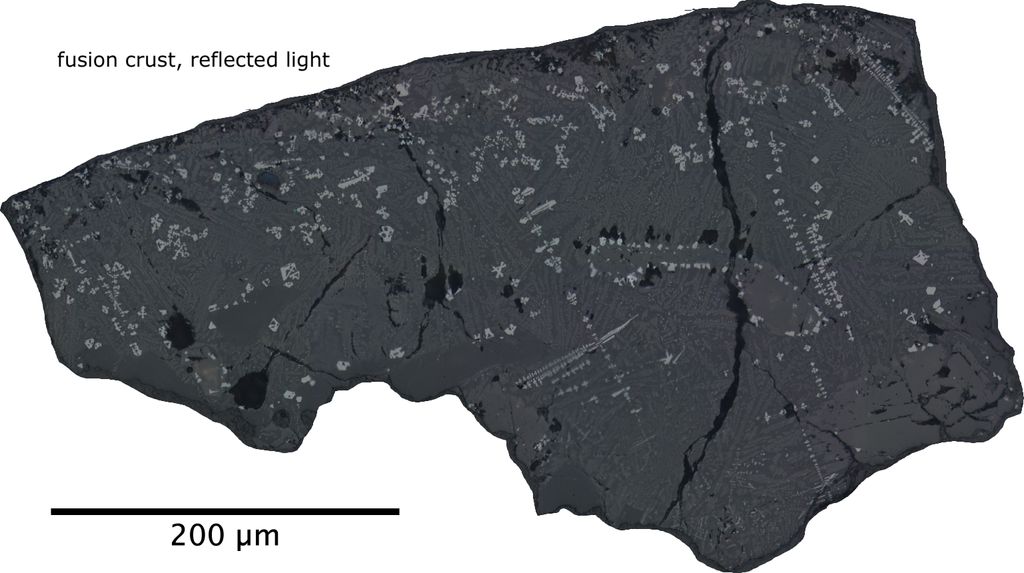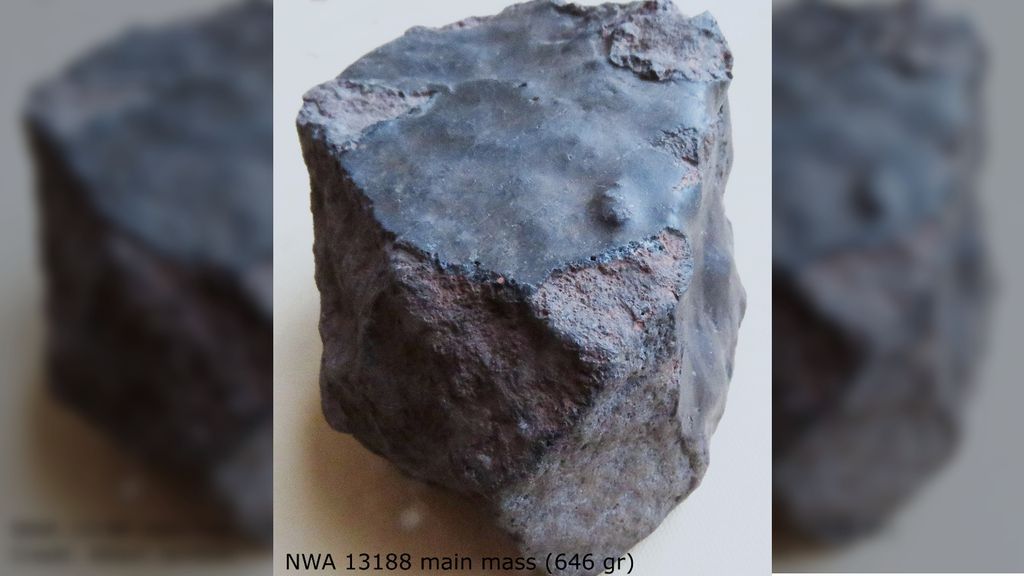The composition of an unusual meteorite suggests that it formed on Earth, spent thousands of years in space, then reentered the atmosphere. But some experts disagree.
Researchers have proposed that an unusual rock, which was recently discovered in northern Africa, could be the first ever known "boomerang meteorite" — a space rock that originated on our planet before being ejected into space and then later tumbling back to Earth. However, not everyone agrees with the new findings, which have yet to be peer-reviewed.
The meteorite, which is named NWA 13188 and weighs around 23 ounces (646 grams), was discovered by meteorite hunetrs in an unknown part of the Sahara Desert in Morocco in 2018. Nobody saw the rock fall to Earth and its composition was discovered to be very similar to a specific type of volcanic rocks known to scientists, which has led to speculation about its origins.
But a group of researchers who have recently analyzed the rock now believe that it is a terrestrial meteorite, a rock that originated on Earth and was catapulted into space millions of years ago, and which has only just fallen back to our planet. Jérôme Gattacceca, a meteoriticist at Aix-Marseille University in France, presented his team's findings July 11 at an international geochemistry conference in Lyon, France. (Their work has not yet been published in a peer-reviewed journal.)
If the team is correct, NWA 13188 will be recognized as the first official terrestrial meteorite found on Earth.

A cross-section of part of the meteorite's fusion crust, which shows that it partially burned up the atmosphere. (Image credit: Albert Jambon)
The researchers believe that NWA 13188 is a meteorite because it has a "well-developed fusion crust" — a fine layer of heat-shocked rock on its surface, which is a sign that it partially burned up in Earth's atmosphere and is not a feature found in volcanic rocks on Earth.
The team also found traces of isotopes (elements with differing numbers of neutrons in their nuclei) including beryllium-3, helium-10 and neon-21, which suggest that the rock was exposed to cosmic rays — high-energy particles that move through space at nearly the speed of light. The level of these isotopes suggests that the rock was in space for at least 10,000 years, but possibly much longer.
There are two possible scenarios for how the meteorite was once ejected into space: The first is that a massive volcanic eruption launched it directly into space, and the second is that it was catapulted out of the atmosphere by a colossal asteroid impact. The researchers believe that the latter explanation is the most likely because no recorded volcanic eruption has been powerful enough to launch rocks into space.
Not everyone is ready to classify the rock as a boomerang meteorite.
"It is an interesting rock," Ludovic Ferrière, a curator of the meteorite collection at the Natural History Museum Vienna in Austria, who was not involved with the new analysis, told Live Science's sister site Space.com. But it requires "more investigations to be conducted before making extraordinary claims." Without being able to trace it to an impact crater or knowing how old it is, it is hard to pin down exactly how the rock left or reentered Earth, he added.
Others think that the rock could also have been birthed elsewhere in the solar system despite its similarities to Earth rocks. "I think there is no doubt that this is a meteorite," Frank Brenker, a geologist at the Goethe University Frankfurt in Germany, who was not involved with the new analysis, told Space.com. "It is just a matter of debate if it is really from Earth."
The research team is planning further analysis to work out the exact age of the rock and search for any other clues that may determine how it was catapulted away from Earth.
NWA 13188 could potentially be the first boomerang meteorite found on Earth, but it is not the first possible terrestrial meteor to ever be discovered. In a 2019 study published in the journal Earth and Planetary Science Letters, researchers identified an unusual chunk of rock from the moon during the Apollo 14 mission in 1971, which contains tiny fragments of quartz, feldspar and zircon that all likely originated on Earth. They propose that this chunk of rock was ejected from our planet when the moon was much closer to our planet, billions of years ago.
- Karlston
-

 1
1



Recommended Comments
There are no comments to display.
Join the conversation
You can post now and register later. If you have an account, sign in now to post with your account.
Note: Your post will require moderator approval before it will be visible.